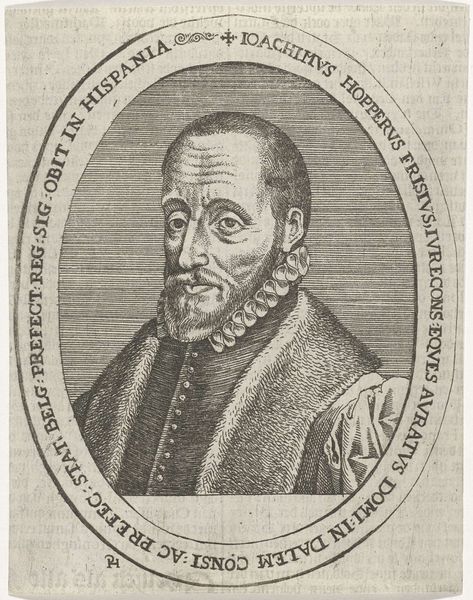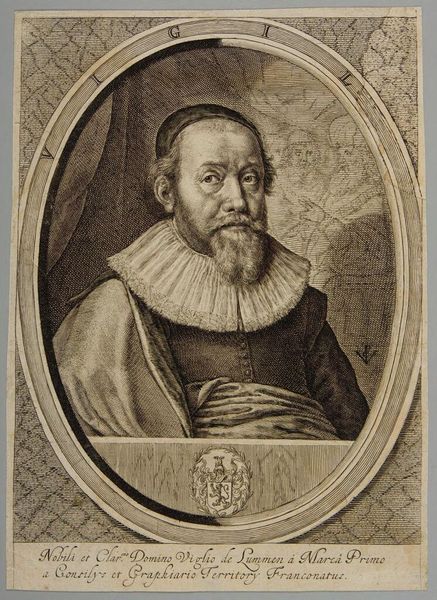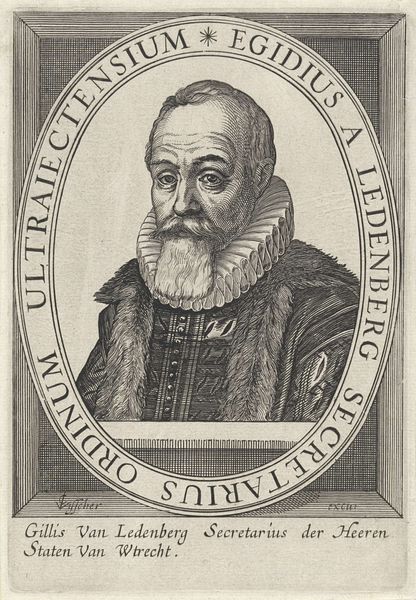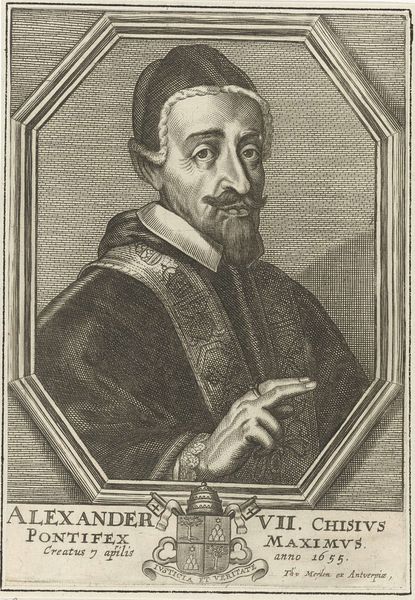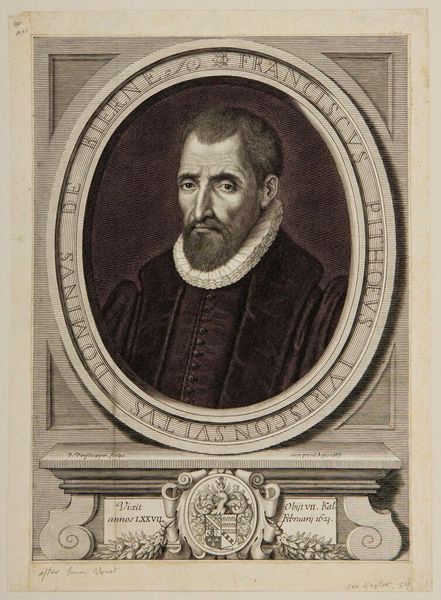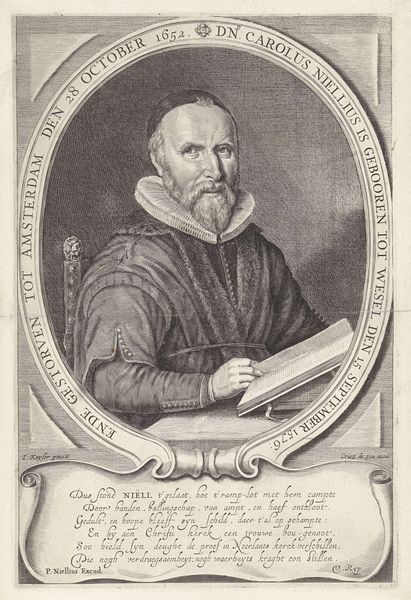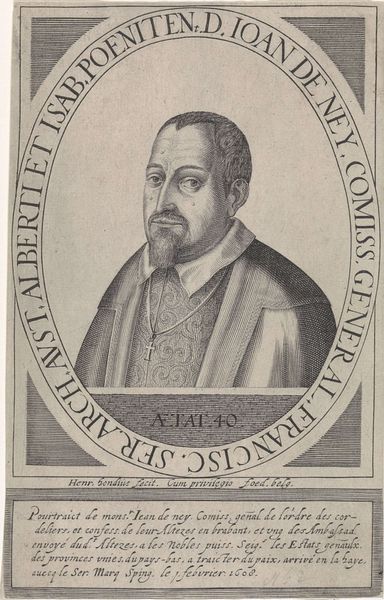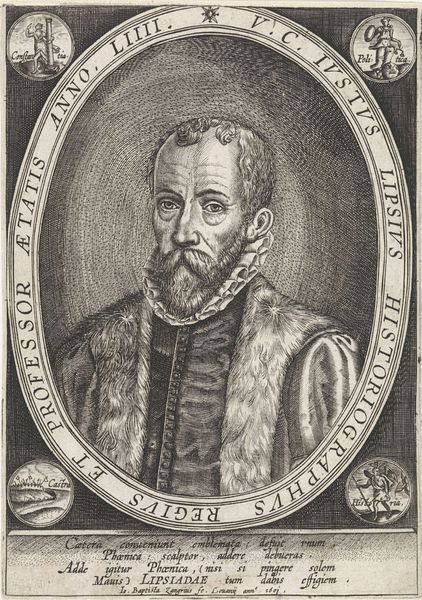
Copyright: CC0 1.0
Editor: This is Renold Elstrack's portrait of William Perkins, a theologian who died in 1602. The detailed engraving gives the impression of an industrious scholar. What can you tell me about this work? Curator: Let's consider the material conditions of its production. Engravings like this were reproducible; consider the printing press as a means of disseminating ideas. How does the use of such a medium affect our understanding of Perkins's legacy and the accessibility of knowledge at the time? Editor: So, the printing process democratized access to Perkins's image and writings? Curator: Precisely! It moves beyond a singular, precious object to a commodity circulating within a specific social context, shaping religious and intellectual discourse. It makes you think about who had access to it and how that influenced the spread of his teachings. Editor: I didn't realize how much the medium itself shaped the message. Curator: Indeed. Examining the materiality and distribution helps us understand the impact of art on society.
Comments
No comments
Be the first to comment and join the conversation on the ultimate creative platform.
